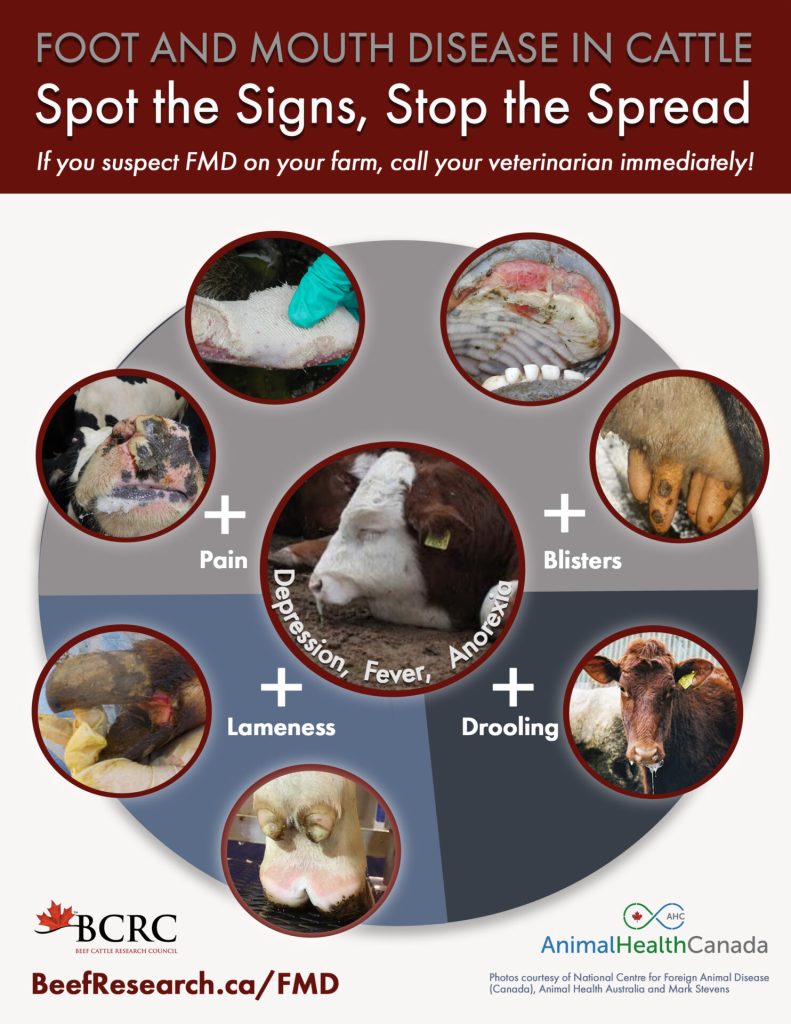How to Identify Common Pet Diseases Signs Symptoms Guide

Understanding your pet’s health is crucial for ensuring their well-being and longevity. Common diseases in pets can often go unnoticed until they escalate into serious issues. Being able to recognize the signs and symptoms early on can make a significant difference not only in treatment success but also in maintaining your furry friend’s quality of life.
As a responsible pet owner, you play a key role in monitoring your animal’s health. Some of the most important signs to look out for include:
- Changes in appetite – whether they’re eating too much or too little.
- Behavioral shifts – like unusual lethargy or aggression.
- Physical symptoms – such as coughing, vomiting, or excessive itching.
This article will delve into the Top 5 common pet diseases that every pet owner should be aware of. By equipping yourself with the right knowledge, you can become a more proactive guardian for your beloved companion.
DISCOVER MORE: Click here for tips on sensory enrichment for your cat
Top 5 Ways to Identify Signs of Common Diseases in Pets
Our pets are cherished members of our families, and just like any family member, their health is a top priority. However, unlike humans, pets cannot express their discomfort or pain through words, which puts the onus on pet owners to recognize signs of potential health issues. Understanding these signs is not just important for the immediate well-being of your pet but also crucial for preventive health care. Early recognition of the symptoms can significantly contribute to effective treatment and management. In this article, we will delve into the top five signs that can help you identify when your pet may need veterinary attention, presented in a countdown from the fifth to the first for a structured understanding of their significance.

5. Changes in Appetite
One of the earliest and most noticeable signs that all is not well with your pet is a change in appetite. Pets are creatures of habit, and deviations in their eating patterns can be indicative of various health issues. A pet refusing food could be suffering from dental problems or may be experiencing nausea or discomfort due to an internal issue. Conversely, an increased appetite may not always be a sign of good health; in some cases, it could indicate diabetes or hyperthyroidism.
- Refusing to eat or drink: This can be an urgent sign and warrants immediate attention if it persists for more than 24 hours in dogs or 48 hours in cats.
- Increased thirst: Excessive drinking could be symptomatic of kidney disease, diabetes, or Cushing’s disease.
- Seeking food obsessively: If your pet suddenly seems ravenous, it could be due to metabolic disorders or behavioral issues.
Close monitoring of your pet’s eating habits, coupled with regular weight checks, can play a significant role in early detection of health issues. If any drastic changes occur, consulting a veterinarian is crucial for a professional evaluation.
A Closer Look at Symptoms
Sometimes the signs are subtle. For instance, if your normally enthusiastic dog tentatively approaches the food bowl but then turns away, there could be an issue with their teeth or gums. Similarly, sporadic overeating might appear benign but could be a red flag for an underlying hormonal imbalance. Understanding these nuances requires patience and observation.
4. Lethargy or Increased Fatigue
Every animal has its own energy level, and what’s normal for one pet may not be for another. However, a noticeable increase in lethargy or fatigue may signify health issues. If a previously vivacious dog or playful cat suddenly becomes listless or uninterested in activities they usually enjoy, it may be time to look deeper into their health condition.
- Reduced playfulness: This may be indicative of depression, arthritis, or systemic illness.
- Sleeping more than usual: Pets often sleep in response to discomfort or when depressed.
- Unwillingness to go for walks or engage in activities: This can be especially concerning if paired with other behavioral changes.
Lethargy can indicate a myriad of health problems, from simple infections or fevers to more severe issues like anemia or heart disease. Evaluating any sustained change in your pet’s energy levels helps in the early detection of these conditions, which can dramatically improve outcomes.
Monitoring Energy Levels
Understanding what is normal for your pet is key to distinguishing when something is amiss. Seasonal changes, shifts in routine, or new stressors in the environment can also impact energy levels. Maintaining a journal of your pet’s activities and sleep patterns can provide valuable insights over time.
3. Vomiting or Diarrhea
Gastrointestinal issues are relatively common in pets, often manifesting as vomiting or diarrhea. While occasional digestive upset may not cause alarm, persistent problems often point to something more serious. This can range from minor diet intolerances to significant health risks like intestinal obstructions or systemic infections.
- Food intolerances or allergies: Symptoms may occur almost immediately or several hours after eating.
- Infections: Bacterial or viral infections can cause abrupt changes in bowel habits.
- More serious gastrointestinal issues: Issues like parasites can cause ongoing digestive disturbances.
It’s important to note that dehydration is a significant risk associated with both vomiting and diarrhea, making it essential to keep an affected pet well-hydrated. If symptoms persist or occur in conjunction with fever, lethargy, or behavioral changes, a vet visit is critical.
Understanding Digestive Health
A sudden change in diet can sometimes be the culprit behind digestive woes, as pets often require time to adjust to new foods. However, chronic symptoms necessitate a deeper investigation, potentially involving dietary trials or diagnostic imaging. Furthermore, observing the nature of vomiting (such as undigested food or bile) can offer clues to the root cause.
2. Changes in Behavior
Behavioral changes often provide valuable insight into a pet’s health. These changes might be easily overlooked but can signify both physical and emotional distress.
- Excessive hiding: This may be a pet’s way of seeking solace from discomfort or anxiety.
- Increased aggression or fearfulness: Pain, neurological issues, or hormonal imbalances can trigger such behavior.
- Sudden onset of destructive behaviors: Chewing, scratching, or other destructive actions can be a response to stress or pain.
Sudden changes in behavior might indicate a desire to communicate an internal issue. For example, a typically sociable animal withdrawing might point to pain or stress, while aggression can sometimes indicate advanced discomfort or neurological troubles.
The Behavior-Health Connection
Behavioral changes can also arise from cognitive decline in older pets, known as cognitive dysfunction syndrome (CDS), akin to dementia in humans. Recognizing and addressing these changes with environmental modifications and dietary supplements can significantly enhance the quality of life.
1. Persistent Coughing or Difficulty Breathing
Perhaps the most urgent sign of potential pet health problems is persistent coughing or difficulty breathing. Respiratory difficulties can be life-threatening and require immediate attention.
- Pneumonia: Can cause rapid breathing, wheezing, and lethargy.
- Heart disease: Often accompanied by coughing, especially at night or after exercise.
- Allergies or asthma: Can trigger persistent coughing or wheezing.
Respiratory distress is particularly dangerous due to the risk of asphyxiation or cardiac complications. An examination often involves listening for heart and lung sounds, followed by potential diagnostic tests such as radiographs or echocardiograms.
Immediate Actions and Further Investigations
If your pet exhibits symptoms of respiratory distress, reducing stress and ensuring a calm environment is important until veterinary care can be accessed. In certain breeds prone to breathing issues, such as brachycephalic dogs, understanding the specific risks and managing behavioral and environmental factors can prevent crises.
In conclusion, understanding and observing these five critical signs can be instrumental in ensuring the well-being of your pet. While regular veterinary check-ups are invaluable, being an attentive pet owner in recognizing these early signs can lead to prompt interventions. Creating a supportive environment where your pet feels secure can also help in actualizing both physical and mental wellness, ensuring a happier and healthier life for your beloved companions.
| Category | Description |
|---|---|
| Behavioral Changes | Observe if your pet exhibits less energy, withdrawal from social interaction, or increased aggression. These can indicate stress or illness and should prompt immediate attention. |
| Physical Symptoms | Look for signs such as vomiting, diarrhea, or unusual weight loss. These physical symptoms are often critical indicators of underlying health issues that need veterinary evaluation. |
| Changes in Appetite | A sudden increase or decrease in appetite can point to various health problems, such as dental issues or digestive disorders. Tracking your pet’s eating habits can be essential for early detection. |
| Respiratory Issues | Watch for coughing, sneezing, or difficulty breathing. Respiratory distress is often a grave sign and may indicate conditions such as kennel cough or pneumonia, requiring prompt assessment. |
Understanding these categories is vital for any pet owner. Recognizing and responding to these signs can not only save your pet’s life but also ensure their overall well-being. Always consult your veterinarian when in doubt about their health. By monitoring for these symptoms, you can be an advocate for your pet’s health and happiness.
DON’T MISS: Click here to prepare your cat for global adventures
Frequently Asked Questions on Identifying Common Diseases in Pets
What are the most common signs that my pet might be sick?
It’s crucial to be observant of your pet’s behavior to catch early signs of illness. Common indicators include changes in appetite, lethargy or unusual tiredness, persistent coughing, or vomiting. Additionally, watch for signs like excessive scratching or biting at their skin, which could suggest skin infections or allergies. Spotting these signs early can lead to timely diagnosis and treatment, averting potential complications.
How can I distinguish between a minor issue and a serious health problem in my pet?
While some issues, such as a short-term change in appetite, might be minor, persistent symptoms can indicate serious health problems. For instance, if your pet exhibits prolonged vomiting or diarrhea, this could lead to dehydration and require immediate veterinary attention. Any dramatic changes in behavior, like aggression or withdrawal, may also be linked to underlying health conditions, warranting a professional evaluation.
Are there specific diseases that are more common in certain kinds of pets?
Yes, certain diseases are more prevalent in specific types of pets. For example, cats are often affected by feline upper respiratory infections, while dogs frequently suffer from ear infections and arthritis as they age. It’s essential to be aware of these common illnesses to better understand your pet’s health risks and take preventive measures to ensure their well-being.
How important is regular veterinary care in preventing diseases in pets?
Regular veterinary care is crucial for early disease prevention and management. By keeping up with routine check-ups, vaccinations, and dental exams, you can safeguard your pet’s health. Vets can identify early warning signs of diseases, providing treatments and recommendations thereafter. Consistent care not only extends your pet’s life but also enhances their quality of life.
DISCOVER MORE: Click here for essential travel tips
Conclusion: Vigilance and Care in Pet Health
In conclusion, being attuned to the subtle signs of illness in our pets is both a responsibility and an opportunity to ensure their enduring well-being. Recognizing symptoms such as sudden behavioral changes, alterations in appetite or weight, unusual lumps or bumps, gastrointestinal disturbances, and changes in mobility can be critical in early diagnosis and treatment. These signs are not just random occurrences; they are often the body’s way of signaling distress or malfunction.
Pet owners must remain observant and seek professional veterinary advice when these signs appear. This vigilance allows for timely interventions that could mean the difference between simple treatments and complex medical interventions. Understanding that each species and breed may have predispositions to certain conditions further emphasizes the importance of personalized attention.
Moreover, this topic underscores the essential role that education plays in pet ownership. By staying informed about common ailments and their signs, pet owners are empowered to act decisively and reassure themselves of their pet’s health status. Preventive care, including routine veterinary check-ups, vaccinations, and a balanced diet, complements this knowledge, forming a holistic approach to pet health that minimizes risks and enhances quality of life.
The journey of identifying diseases in pets is one of ongoing learning and adaptation. As research advances, new insights and treatments are continually discovered, suggesting that pet health is not a static field but one where curiosity and care go hand in hand. By investing in our knowledge, we not only safeguard our pets but also enrich the bonds that make them cherished members of our families.
In this regard, the importance of being proactive rather than reactive cannot be overstated. Our pets rely on us for their survival, and through vigilance, we can respond to their most crucial needs. The time to act is now—embrace the responsibility and cherish every moment with your furry, scaly, or feathery friend.


